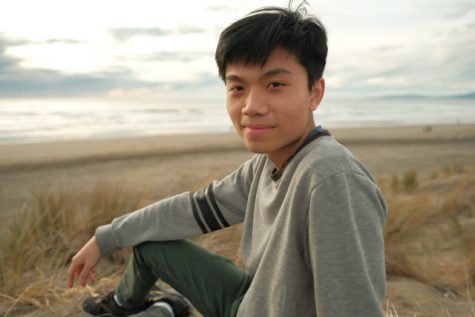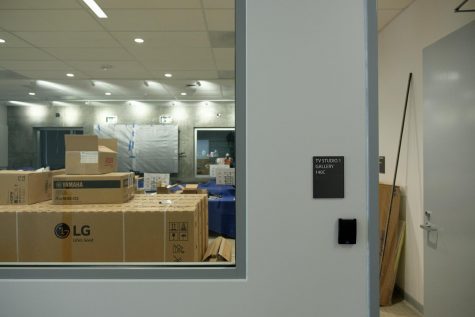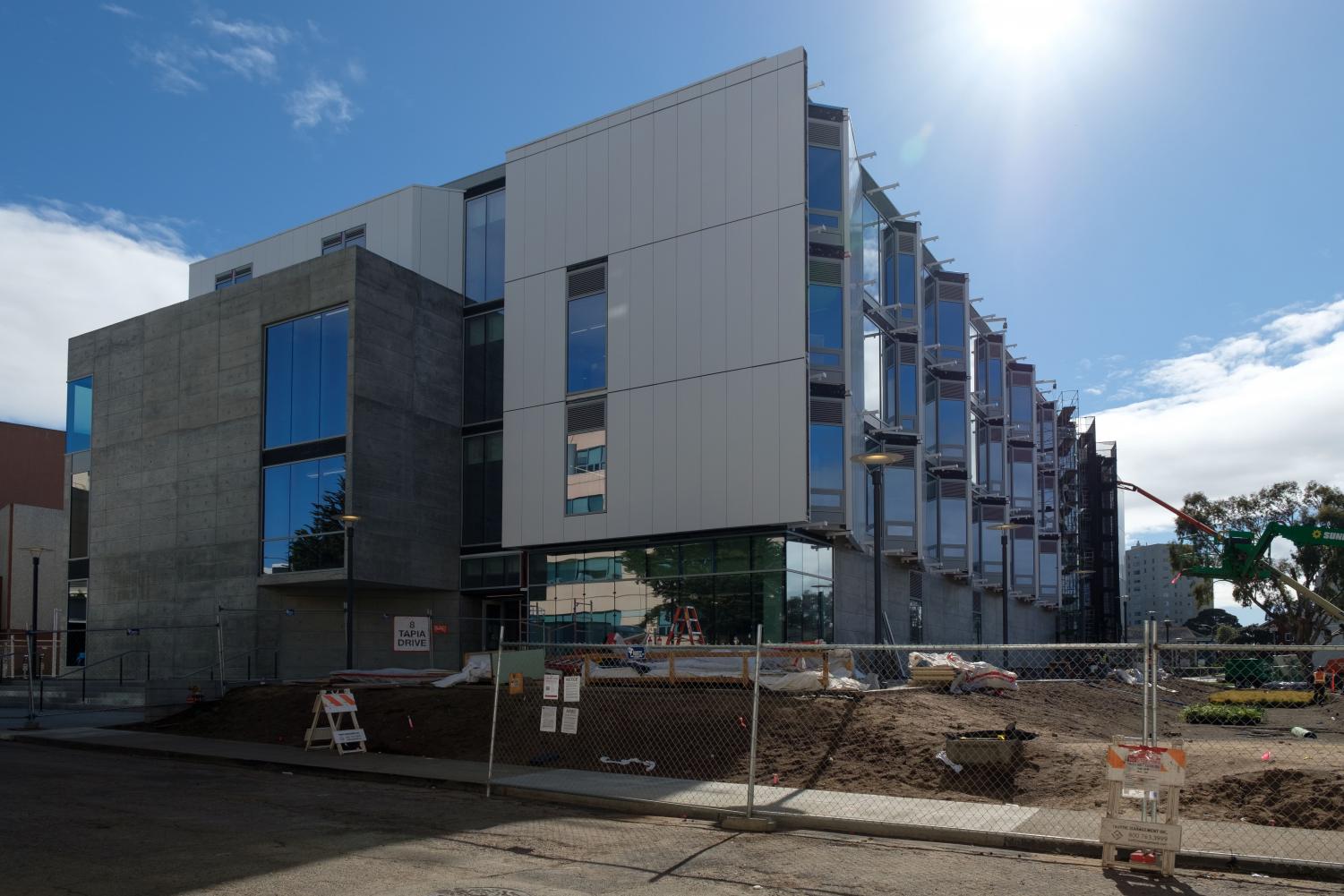
New eco-friendly buildings on SF State campus
SF State aims to reduce its carbon footprint with the new Liberal and Creative Arts Building and Science Building
February 4, 2021
SF State is looking forward to giving students new opportunities and experiences with the freshly built and eco-friendly George and Judy Marcus Hall College Liberal and Creative Arts building and a new Science Building that is reported to open by 2024, according to SF State’s Capital Planning, Design and Construction website.
“Our hope is always that we create the spaces that our students, faculty and staff deserve, for their teaching and learning and to really ensure that they can pursue their education or their research in a facility that supports that effort,” University Enterprises Vice President Jason Porth said.
The LCA Building, which finished construction last December, is the first academic building to be built on campus in 25 years, since the Creative Arts building was built. The LCA building is the new home for SF State’s Department of Broadcasting and Electronic Communication Arts students and faculty. BECA students will be able to enhance their broadcasting skills with the new equipment and newsrooms.
The budget of the LCA building sits at $81 million. California State University pledged $58 million to the LCA building, and SF State has budgeted $3 million toward the building. SF State alumni, parents, friends and business partners are currently raising $20 million that will go towards media technology, classroom equipment, interior buildout and green building initiatives.
The LCA building includes three floors of classrooms, a television newsroom, an audio recording studio and a television studio with greenscreen capability. Almost all the building rooms will be filled with new equipment that students will use to create various assignments and projects. The amenities did not exist in the Creative Arts building, where the BECA department was located prior to the move.

Former chair of the Facilities Planning Committee and assistant professor at the BECA Department, Ashley Larson, said having new equipment and a new space will prepare students for their future careers in broadcasting.
“Being able to teach in such updated and new spaces, it gives students as real-world of an experience as possible,” Larson said. “It is not only valuable to us as a university, but it’s really valuable because we are training students that are going to be prepared to go out and be even more effective than they already are in the workforce.”
The new Science Building will be the first STEM building to be constructed on campus in the last 50 years since Hensill Hall building, and will provide the students at the College of Science and Engineering with new labs and classrooms to further their learning. Students at the College of Extended Learning will also call this building their new home after being in a rental space located off-campus for 15 years.
According to the website for the Science Building, the building will include new lecture rooms, a social space where all students can gather and new labs with fresh and sustainable equipment.
The Science building comes at a $169 million project. $149 million is covered by the CSU and $20 million will be covered by the College of Extending Learning.
DPR Construction and SmithGroup are working with SF State on the new Science Building to be more eco-friendly. These groups focused on features that could make the building more sustainable and have a longer and better lifecycle.
According to the SF State’s director of Sustainability and Energy, Caitlin Steele, both buildings have met the gold standard of the Leadership in Energy and Environmental Design, a green building certification program used worldwide. One of the features that meet the gold standard is the stormwater management system. Stormwater management systems collect rainwater, and the rainwater waters the landscape of the surrounding areas.
“California is always increasing their building standards, always increasing their energy efficiency standards, always increasing the water efficiency standards, always pushing for more efficiency,” Steele said. “We want to be ahead of the curve, we want to say, you know, let’s future proof this building– let’s plan it out.”
Though both buildings will have a stormwater management system installed, the new Science Building will be 100% electric. Principal of Engineering at SmithGroup, Stet Stanborn said that a 100% electric science building is rare.
In its quadrennial technology review, the United States Department of Energy stated that “buildings account for 76% of electricity use and 40% of all U.S. primary energy use and associated greenhouse gas.” That energy includes natural gases.
“If we can use that electricity, instead of burning natural gas in our buildings, then we can have much lower emissions for the building,” Sanborn, said.
Sanborn also mentioned that the building will have a water source heat pump. Water source heat pumps are sustainable renewable energy solutions that control the temperature inside the building. WSHP uses static or flowing water as a heat source and removes that heat into the building exhaust air before leaving the building, rather than taking heat from the outside air.
Other features that make the Science Building more sustainable are the high-reflectivity cool roof, high-performance glazing, low-flow plumbing fixtures and advanced lighting controls.
“The science building is kind of pushing that envelope of cutting edge design and supporting decarbonization and phasing out natural gas in a building that typically is not where you would phase out natural gas,” Steele said.
While the Science Building’s opening is still years away, the LCA building will be open to students once they can safely return to campus. According to a California State University press release, this could be as early as fall.


